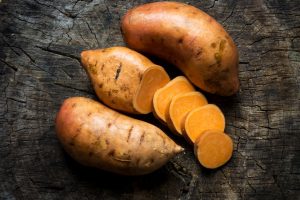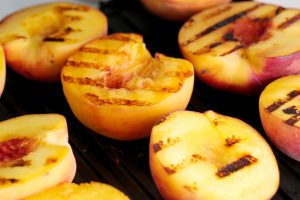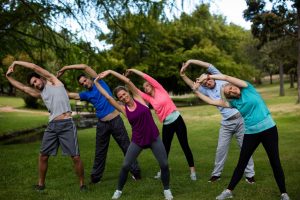We know you’re running a tight schedule, so look no further for a quick and easy weeknight meal. These cakes are packed with whole grains, protein and taste like you’ve spent hours in the kitchen!

Prep Time: 10 minutes
Cook Time: 10 minutes
Total Time: 20 minutes
Servings: 6 cakes
Ingredients
- 1 medium sweet potato, peeled
- 1/2 cup cooked quino
- 1 6 oz can wild salmon (skinless and boneless if possible)
- 2 large eggs
- 4 green onions minced
- 2 tablespoons gluten-free cornmeal/flour of choice
- Salt & pepper to taste
- Oil for cooking
Instructions
- Cut the sweet potato into cubes. You’ll have about 2 cups. Add them to a steamer basket and steam for 5 – 7 minutes until the potatoes are fork-tender.
- Allow the sweet potatoes to cool slightly, then transfer them to a bowl and mash them until (almost) smooth.
- Add the rest of ingredients into the mixing bowl and mix with a wooden spoon until everything is combined and a dough has formed.
- Form the dough into 6 patties, place on a plate and set aside.
- Heat the oil in a 10″ skillet over medium heat. Sauté the salmon cakes for 3 – 5 minutes per side, until browned, crispy and heated through.
- Serve warm with your desired dipping sauce (try guacamole with sriracha mixed in!)
Nutrition
Serving: 1cake | Calories: 134kcal | Carbohydrates: 10g | Protein: 8g | Fat: 6g
Original recipe from Simply Quinoa can be found here!







